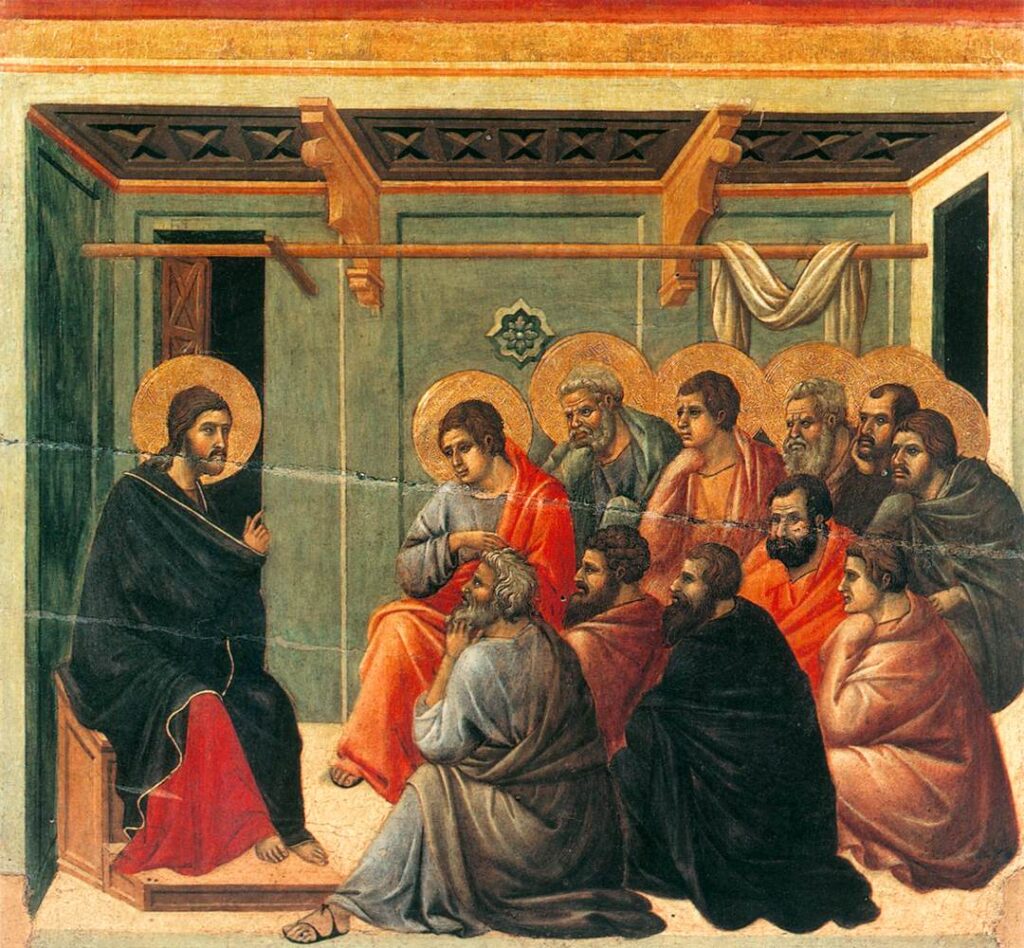This cantata was composed for a first performance in 1725, as part of the second annual cycle of Leipzig cantatas. It belongs to a small sub-cycle of 9 cantatas that Bach composed with librettos by Mariane von Ziegler, a Leipzig poet born in 1695. Ziegler was a lover of the arts, and in addition to writing poetry, she played the clavier, the lute and the transverse flute. In setting Ziegler’s librettos, Bach often made alterations to them, and it’s not known to what extent Ziegler participated in (or agreed to) those changes.
The cantata is scored for trumpet (which only appears in the second aria and final chorale), flauto piccolo (a sopranino recorder in D), 2 oboes d’amore, strings, 4-part choir, and basso continuo. The solo voices required are alto and tenor. In a later revision for 1731, the recorder was replaced with a transverse flute. The version we’re hearing today keeps the recorder for the opening movement and closing chorale, and uses the flute for the alto aria.
Cantata 103 is for Jubilate, that is, the 3rd Sunday after Easter. The text for the opening movement is taken verbatim from the Gospel of that Sunday (John 16: 20). In it, Jesus announces to his disciples that he will soon leave them, and that they will be distressed, but that their sadness will turn into joy. Movements 2 through 5, which are two recitative / aria pairs, are Ziegler’s, and the closing chorale is the sixth verse of a hymn by Paul Gerhardt of 1653.
For the opening movement, the Gospel verse is broken into three sections. The instruments start with a concertante sinfonia, on a theme that will later represent joy. Then the choir enters fugally on a totally different theme, chromatic and with wide leaps, illustrating “weinen und heulen” (“weep and wail”). Soon after, the joyful theme reappears in the voices on long melismas for “freuen” (“rejoice”). The middle section is 8 bars of a fully orchestrated bass recitative, restating that the disciples will be sorrowful. The choir then resumes the fugue, using the chromatic theme for the word “Traurigkeit” (“sorrow”) and the joyful motif for “Freude” (“joy”).
The first recitative and aria set elaborates on the idea of sorrow. A secco recitative for the tenor, with a melisma on the word “Schmerzen” (“pains”), leads to a very expressive alto aria in 6/8 with flute and continuo. This aria was accompanied by the sopranino recorder in the original 1725 version, then replaced by flute in 1731.
The next set of recitative and aria turns to the topic of joy. The alto recites, with a melisma now on the word “Freude” (“joy”), and the tenor sings a lively aria with trumpet and strings, on a joyful motif of upward triads.
The cantata closes with a plain chorale on the Paul Gerhard hymn, with the instruments doubling the voices.
